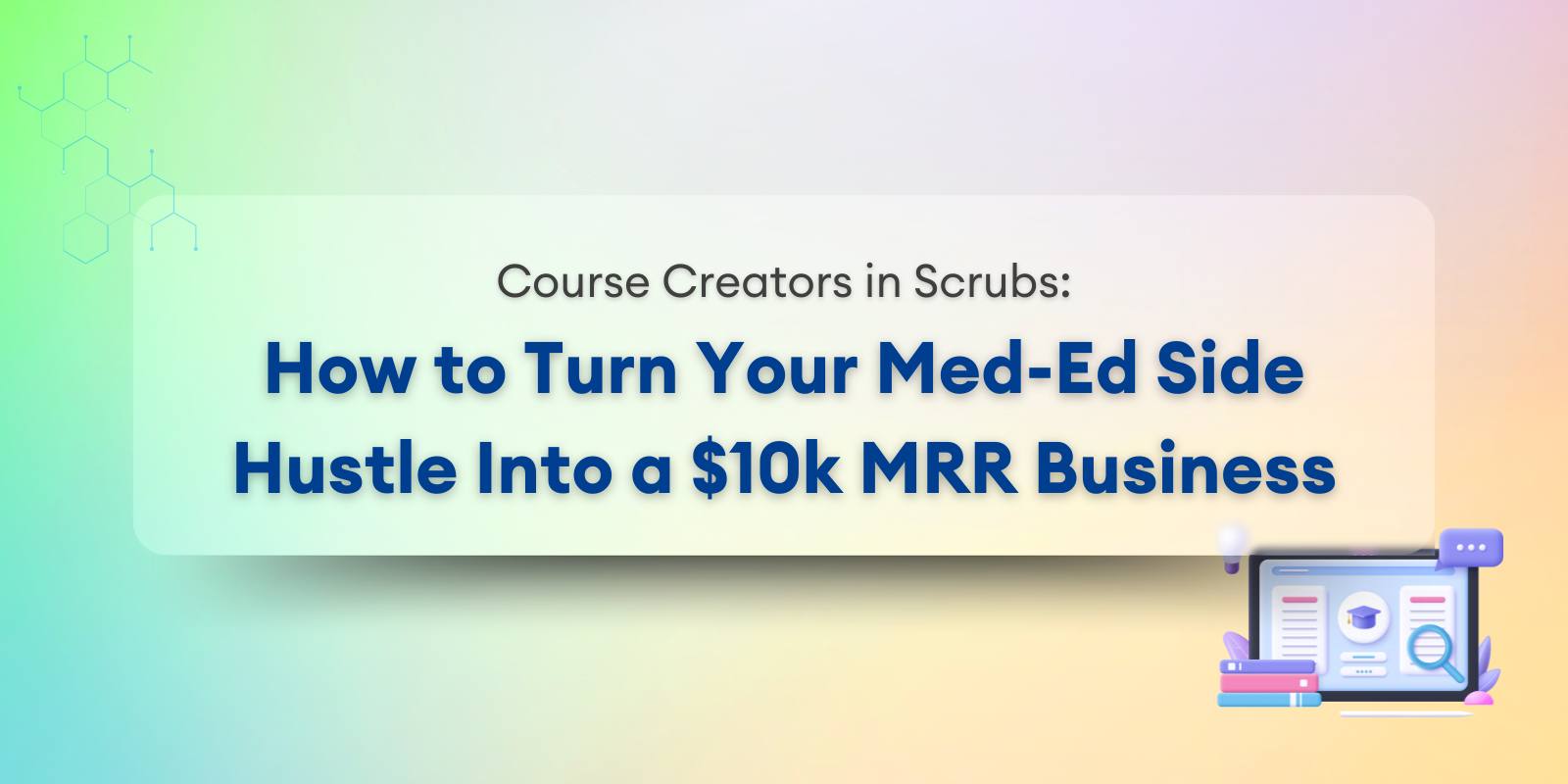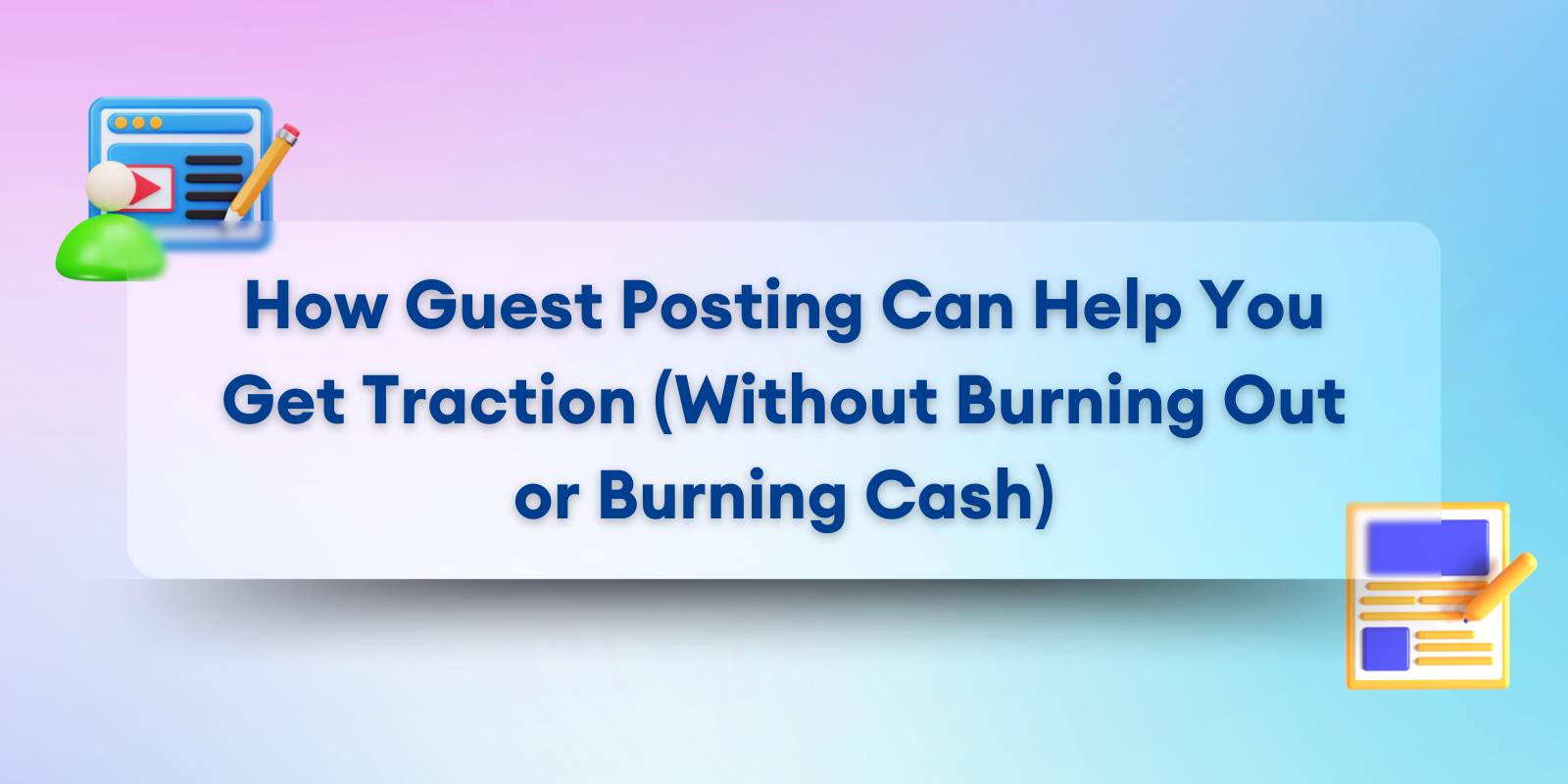
You’ve got the clinical chops. You’ve got the audience asking questions.
You’ve even got folders full of slides, scripts, and case walk-throughs.
But revenue? That still feels like a mystery.
You’re not trying to be a YouTube influencer or drop $15K on a course launch team.
You just want to turn your Med-Ed side hustle into something that pays your rent, buys your time back, or replaces a few exhausting shifts.
And here’s the good news:
You don’t need a big team.
You don’t need a content studio.
You don’t need to be “salesy.”
You just need a system that builds once and sells again and again, with content that actually delivers value.
In this guide, we’ll break down how medical professionals (just like you) are turning simple courses into $10K/month income streams using lean tools, better design thinking, and a few strategic upgrades most creators miss.
Let’s get into it.
Step 1: Build Content That Feels Premium
There’s no shortage of medical content online.
But there’s a very real shortage of content that feels like it’s worth paying for.
That’s the gap.
Your credentials might earn trust. But trust alone doesn’t justify a $199 price tag.
You need structure. A better user experience. And content that teaches clearly, not just dumps data.
Let’s fix that.
What Today’s Learners Expect
Med students, new grads, and even working clinicians don’t want longform lectures.
They want clarity. Quickly.
They want:
- Visuals over text
- Quick wins over info overload
- Mobile-friendly content they can binge between shifts
In other words: short-form, high-retention lessons with better scaffolding.
If your course feels like a slide dump or screen-recorded Zoom, you’re losing people.
And they won’t finish it, let alone recommend it.
Boosting Value Perception
Let’s talk about perception.
A course that looks premium feels premium, and premium-feeling courses get higher completion rates and more referrals.
In our level-up checklist, we often recommend embedding short 3D medical animations to break down complex topics visually and instantly elevate perceived value.
Not 45-minute render sequences.
Think: 15-30 second loops that explain a single mechanism, structure, or condition. Something that makes your learners say, “Wait, that’s how it works?”
Here are a few ways Med-Ed creators use visual upgrades like this:
- Walk through cardiac cycles with clean rhythm visuals
- Show drug–receptor interactions at a cellular level
- Animate medical devices for explainer modules targeted at pre-sales teams
You don’t need a studio. You just need the right assets in the right places.
These little upgrades make your $59 course look like it’s worth $299, and make the leap from “meh” to memorable.
Step 2: Pick a Niche That Pays
The biggest mistake Med-Ed creators make?
Teaching what they already know, instead of what people are actively searching (and paying) for.
You’re not publishing a textbook. You’re building a product.
The Expertise Trap
Let’s say you’re a pharmacist.
You’ve built a killer slide deck on rare drug interactions.
But when you post about it, no one bites. Why?
Because your audience doesn’t wake up thinking, “I need an advanced lecture on idiosyncratic CYP450 behavior.”
They’re thinking, “What should I know for boards?”
Or “What gets asked in interviews?”
Or “How do I explain meds better to patients?”
Your real value lies in translating expertise into outcomes people care about.
Instead of starting with your degree or resume, start with market tension:
- What’s underserved?
- Where are people stuck?
- What’s too boring, too technical, or too overwhelming, and could you make it simple?
Match Knowledge to Market Tension
You don’t need 10K followers or a personal brand.
You just need to serve one tight audience with one clear pain point.
Some proven micro-niches from Med-Ed creators:
- USMLE Step 1 prep in short bursts: Bite-sized pharmacology or anatomy sessions, mobile-first, test-aligned.
- Anatomy for yoga teachers: A certified PT breaks down musculoskeletal movement in real language.
- Pharma for healthtech PMs: Short explainers that bridge clinical insight and product development.
None of these require a massive team or following. Just specificity.
So ask yourself: Where do you have the deepest clarity, and where’s there unmet demand?
That overlap is your course.
Step 3: Set It Up Once. Sell It Forever.
This is where Med-Ed creators stop trading time for money.
You don’t need to go live every week. You don’t need to build a massive library.
You need a system that runs while you’re on shift, or on vacation.
That means two things: Evergreen content and lightweight automation.
Evergreen Course Mechanics
Forget production studios.
The best-performing Med-Ed courses today are short, structured, and pre-recorded.
Here’s how to set it up:
- Break content into 5-7 minute segments: One concept per video. Shorter = higher retention.
- Group segments into 1-3 core modules: Not too much. Just enough to solve a specific problem.
- Include 1-2 practice prompts or visual cheatsheets: PDFs, diagrams, quizzes, anything learners can use offline.
You can build this on:
- Teachable or Podia (if you want full control)
- Notion + Gumroad (if you want lean and fast)
- Even Carrd + Stripe (if you're MVP-ing for $10/month)
Don’t overthink it.
One clear promise, one clean delivery. That’s enough.
Automation = Scalability
Once your course is live, let the tech do the talking.
- ConvertKit → Handles lead capture and welcome emails
- Outseta → All-in-one: authentication, payments, CRM
- Airtable or Tally → For post-course feedback forms
Set up a 3-email welcome flow:
- Course access + brief intro
- “How to get the most out of it” (with learning tips)
- “What’s next?” → Invite to upsell, feedback, or community
That’s it. You’ve built a system.
Now, every new student gets a consistent, branded experience, without you doing it live every time.
Step 4: Pricing, Positioning, and Getting Paid
You built a solid course. You nailed the structure.
But if you price it like a side hustle, people will treat it like one.
The difference between a $39 download and a $299 course isn’t just content.
It’s how you frame it.
Stop Charging Like It’s 2012
Low-ticket pricing doesn’t work for Med-Ed creators anymore.
Your audience isn’t impulse-buying a productivity ebook. They’re investing in clarity, confidence, and career growth.
$99-$299 is the new baseline for medical courses that:
- Solve a real learning pain point
- Look polished
- Offer more than just talking-head videos
Want to raise perceived value instantly?
- Add a workbook
- Offer short lesson summaries
- Package a 3-part mini-course as a “series”
- Build in CME credit (where applicable)
One creator sold a $199 course with zero video, just slides, annotated visuals, and a custom quiz pack. It worked because it felt useful and finished.
Your learners don’t want volume. They want outcomes.
Pricing Tiers + “Silent Upsells”
You don’t need a 5-tier funnel. You just need options.
Here’s a clean 3-tier model:
- Base Course ($129): Core modules + visual aids
- Premium ($299): Everything above + 1:1 async feedback via Loom or email
- Team License ($599): Unlimited access for up to 10 learners, ideal for hospitals or preceptor groups
Want to scale quietly?
- Add an affiliate program (10–15% is common)
- Give past learners a discount code to share
- Offer silent bonuses (like bonus Q&A packs) to increase word-of-mouth
Your price signals your quality.
Don’t compete with low-effort content. You’re not in that league.
Step 5: Get Eyeballs Without Becoming a Content Machine
You don’t need 10K followers. You need 10 ideal customers a week.
That’s it.
And guess what?
They’re already out there, scrolling Reddit threads, lurking in Facebook groups, searching YouTube, and Googling terms you could rank for with a single blog post.
Let’s find them.
Where Your People Hang Out
Think beyond LinkedIn posts and TikTok trends.
Your audience is hiding in plain sight.
Try these:
- Reddit: r/medicalschool, r/pharmacy, r/nursingstudents; share one tip or freebie, not your landing page
- Slack + Discord: Join med creator or student circles. Help first. Drop your link only when asked.
- IndieHackers or MakerPad: Great for non-clinical medical educators or healthtech explainers
- Facebook Groups: There are niche communities around everything from MCAT prep to medtech PM roles
Don't just post your link. Add value, share a preview, ask for feedback.
Low-Lift Launch Formats That Actually Work
No huge launch needed. Just do one or more of these:
- “Build in public” thread → Screenshot your Gumroad dashboard, talk about the process
- “What I wish I had” story → Share what you struggled with during med school/residency, and how your course solves that gap
- Newsletter collab → Find a micro-med creator with a list. Offer them a 30% rev share for a shoutout.
You’re not building an empire. You’re solving a problem for a niche audience.
Do that well, and the sales come. Quietly, consistently.
Conclusion: You’re Closer Than You Think
You don’t need a launch team.
You don’t need 100K followers.
You don’t need permission.
You just need one solid course, solving one clear problem, for an audience you already understand better than any edu-bro ever could.
We’re not talking about chasing passive income fantasies.
We’re talking about turning your medical know-how into a revenue-generating asset that works even when you're not.
Start lean. Build what’s missing.
Upgrade the visuals. Focus the offer. Price it like it matters.
Because it does.
You’ve got the experience. Now you’ve got the playbook.
Let’s go turn your scrubs into a second income.




